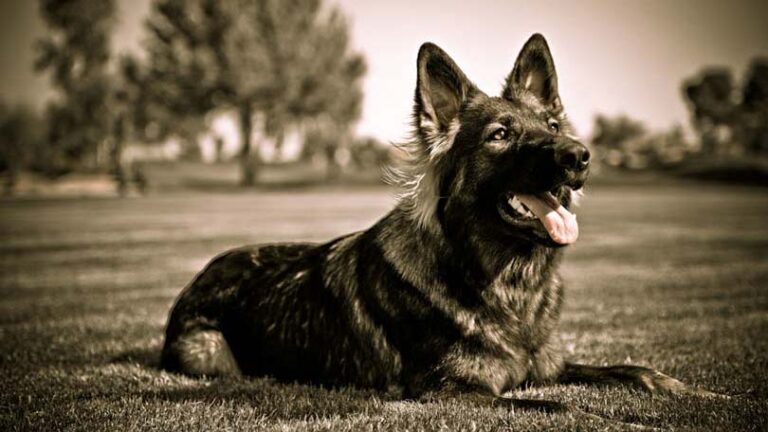Tail Chasing
The puppy spins and spins, attempting to grab that alluring tip just out of reach. He trips, stumbles, falls on his plump behind, and finally bites down on the fluff of fur he has been chasing. His audience cheers him on and claps when he finally manages to reach his goal. He lets go of his tail and starts it all over again.
What can seem like a playful and amusing play behavior is not as harmless as it may seem at first. Tail chasing is often a sign of the dog not getting enough exercise and an attention-seeking behavior but can also be a coping mechanism for an anxious dog, often leading to obsessive-compulsive behavior. Tail chasing in a mature or older dog can be an early sign of a neurological disorder or that a physical injury or irritation has developed, causing him to chase it in an attempt to relieve the discomfort.
Diagnosing why the dog is chasing his tail is the first step in correcting the problem behavior.
Behavioral Causes
When dogs are young, tail chasing is ‘cute’ and often encouraged to perform for their people. As the months go by, tail chasing becomes less cute and possibly the encouragement turns more negative. For many dogs, especially dogs that do not get enough people time, negative attention is better then no attention so the behavior continues. Positive or negative, dogs are a social creature and any attention is better then no attention so the tail chasing continues.
Ignoring this behavior entirely is the best way of stopping it in its tracks. Once the dog no longer receives any kind of reinforcement for it, losing the ‘reward factor’, he will stop it soon enough. However, spending more time with the dog is necessary as he is chasing his attention for a reason – he spinning is a silent scream for attention. This ‘counter conditioning’ is the most common treatment for tail chasing.
Tail chasing can also be seen in dogs that are not exercised enough or living in a confined space. All dogs require some sort of aerobic exercise to stay healthy and tail chasing is one way for a dog to ‘self-exercise’. Once the amount of exercise is increased, the problem often goes away all on its own.
Some anxious dogs will chase their tail when they are stressed as the physical side of the behavior wears down the anxiety . Learning what is causing the dog stress and learning to curtail it is one aspect of the treatment while exercising the dog more so that they have another way of burning off the stress is important. Lastly, building up the dog’s confidence can help curb the anxiety. Eventually, the tail chasing will stop.
Medical Causes
There are a number of medical conditions that can contribute to tail chasing behavior. Tail chasing in its most serious form have been associated with psychomotor epilepsy , a rare seizure-related problem.
Other medical conditions can be caused by pain, irritation or odd sensations within the tail.
Treating Tail Chasing in Dogs
The cause of the tail chasing must be diagnosed before any treatment should begin and a full examination by a veterinarian should be sought before any changes are made to your dog’s daily routine. Your veterinarian must be involved in diagnosing a neurological condition and using both behavior modifications along with medication often is the best way control anxiety.
Tail chasing is cute in a young pup but it can quickly manifest itself into a real problem. Never encourage this behavior in a dog of any age and if your dog’s behavior changes dramatically, check with your veterinarian.

Having discovered a fondness for insects while pursuing her degree in Biology, Randi Jones was quite bugged to know that people usually dismissed these little creatures as “creepy-crawlies”.







